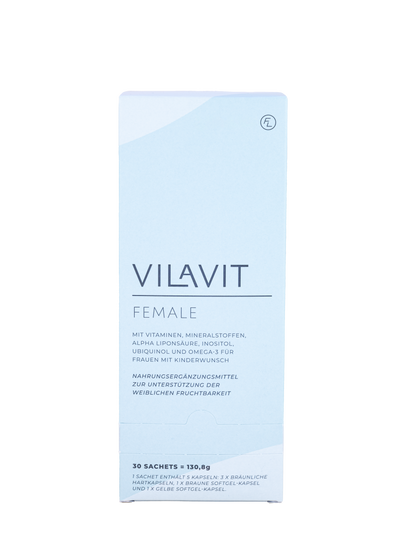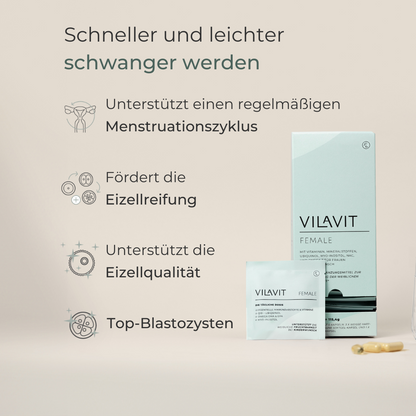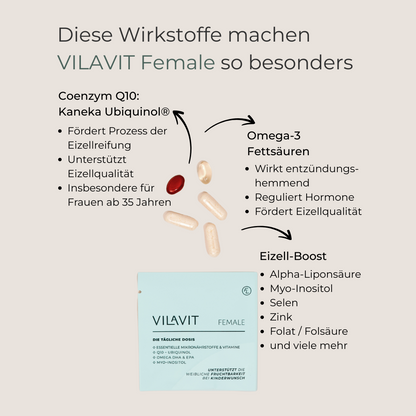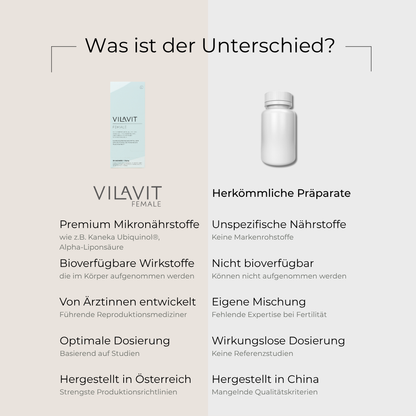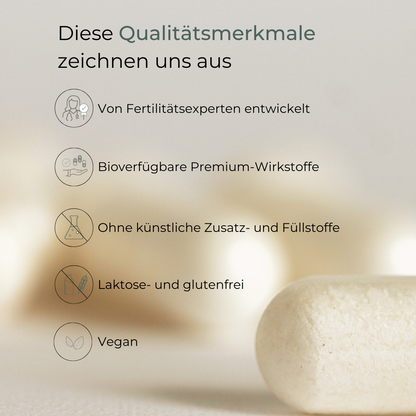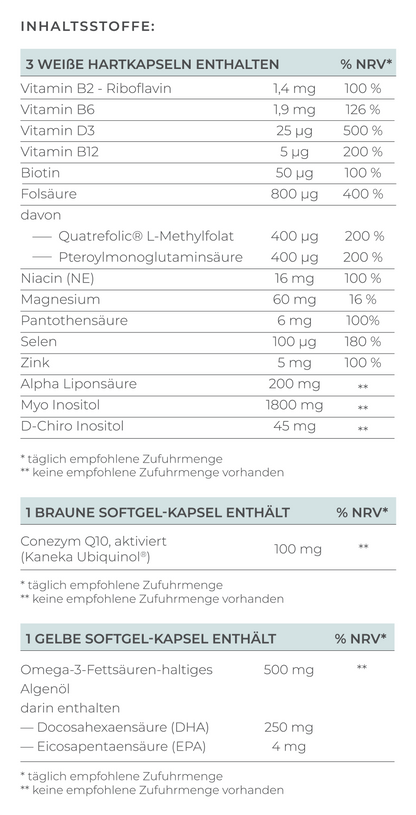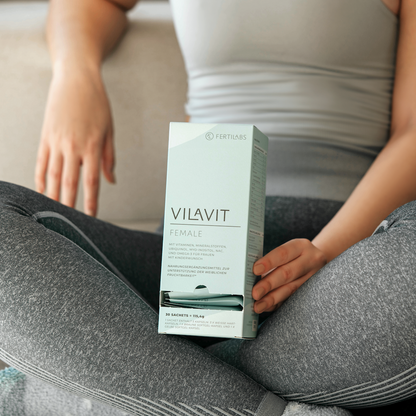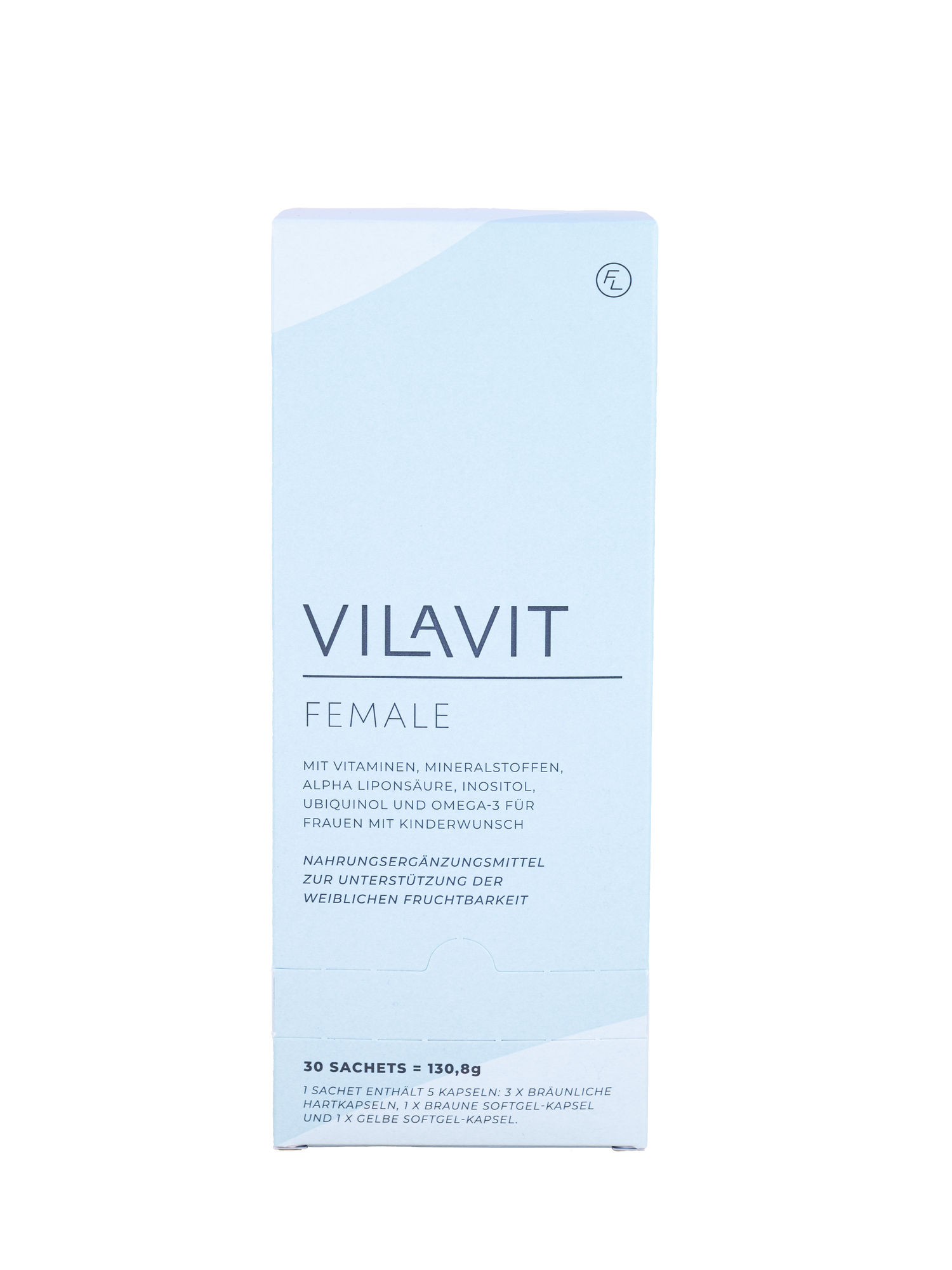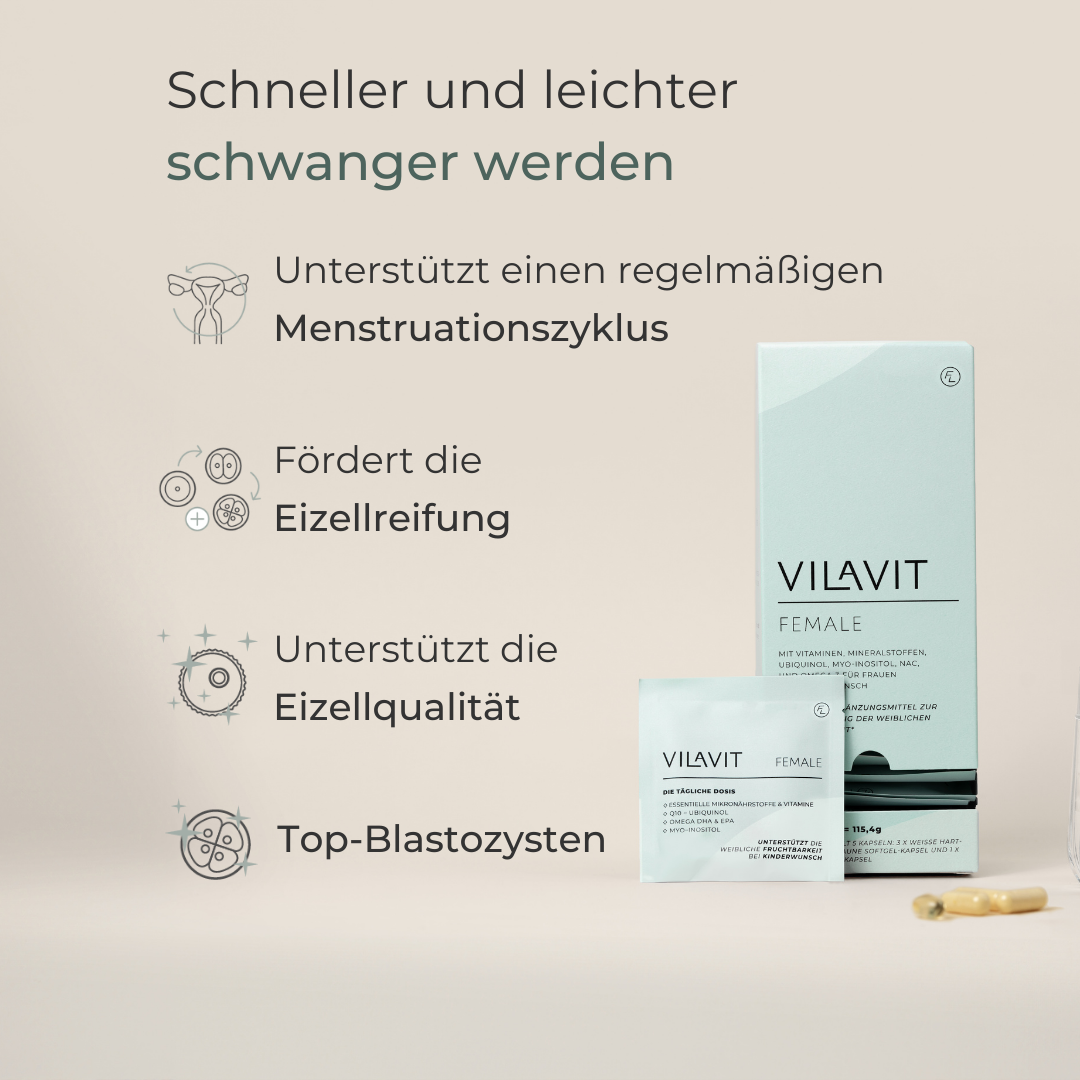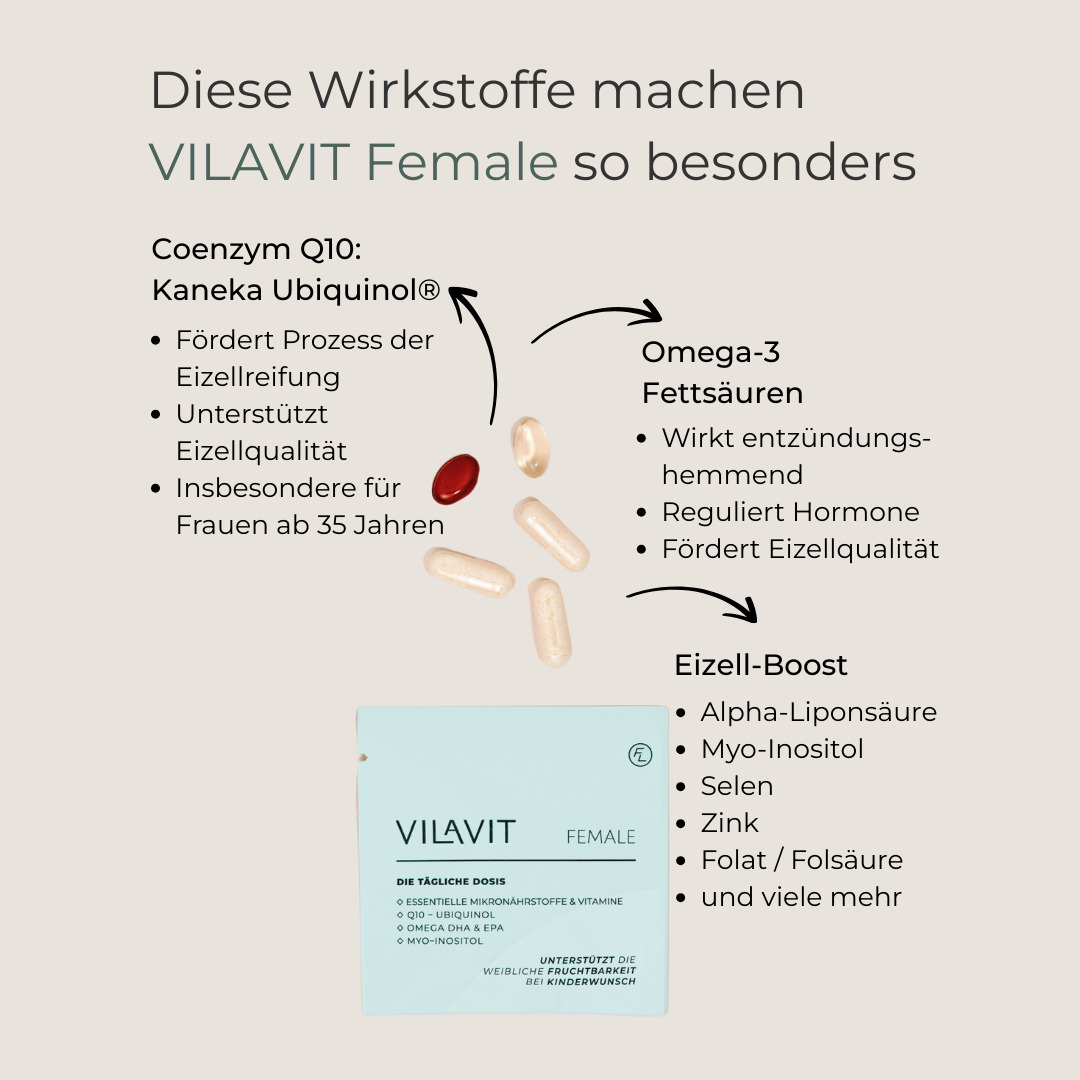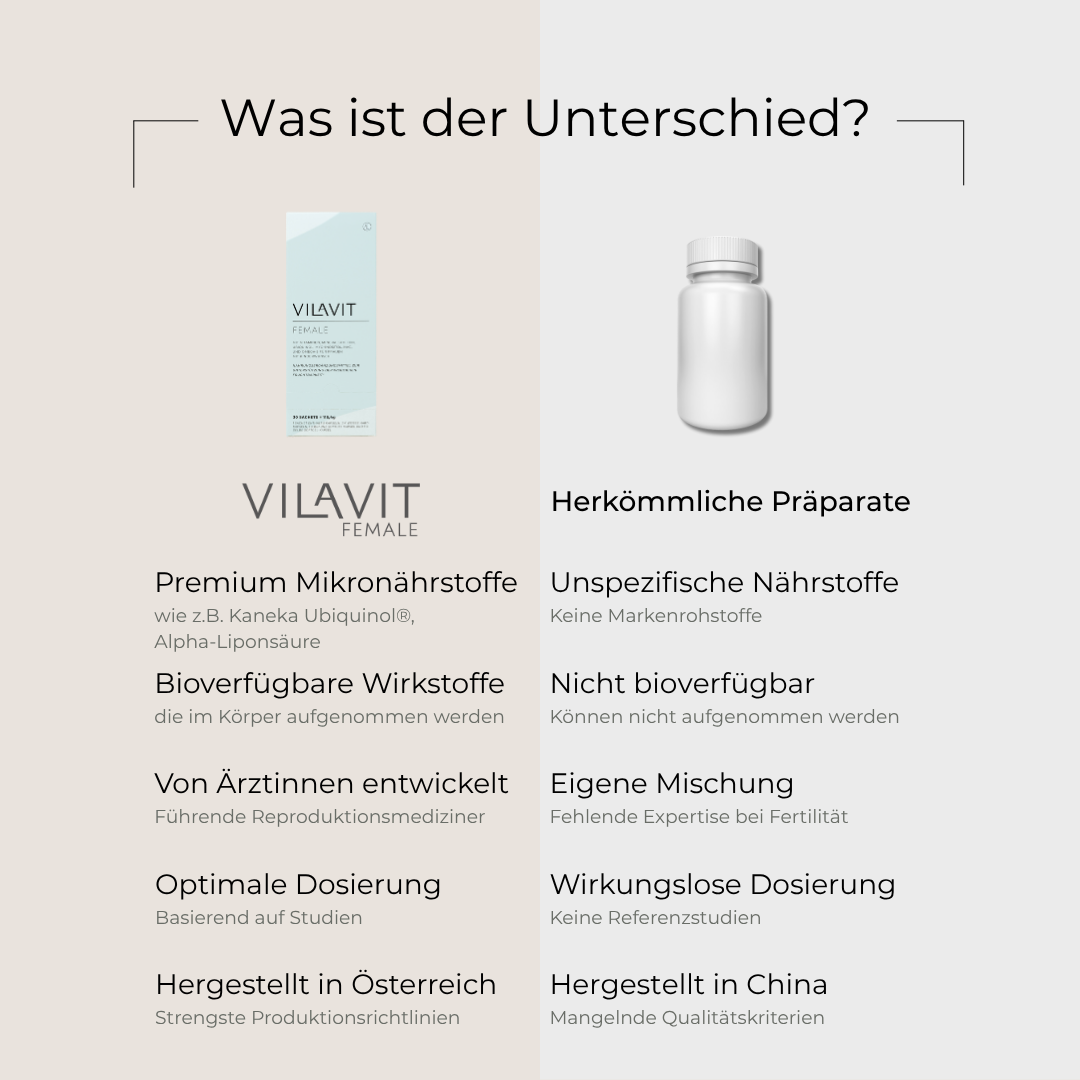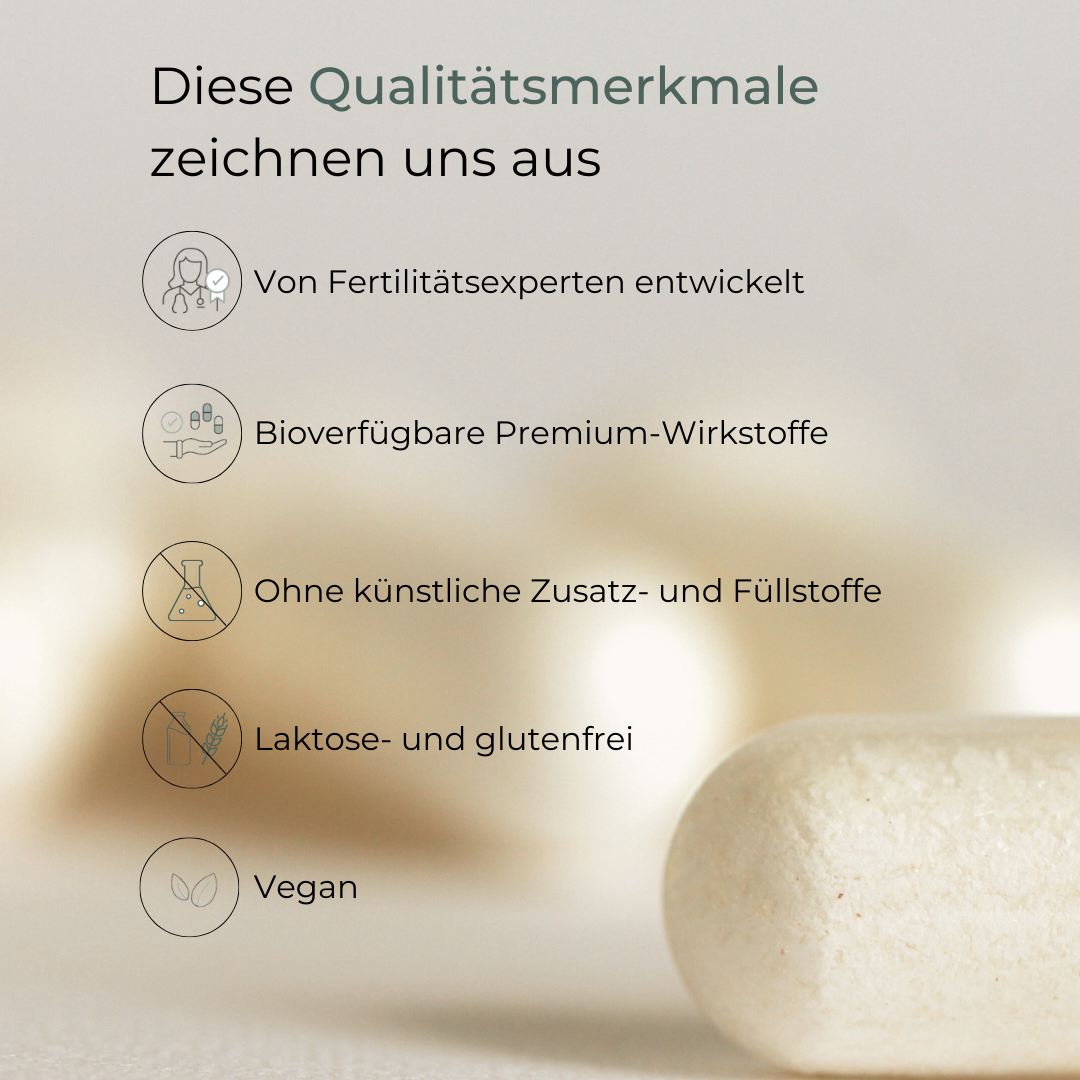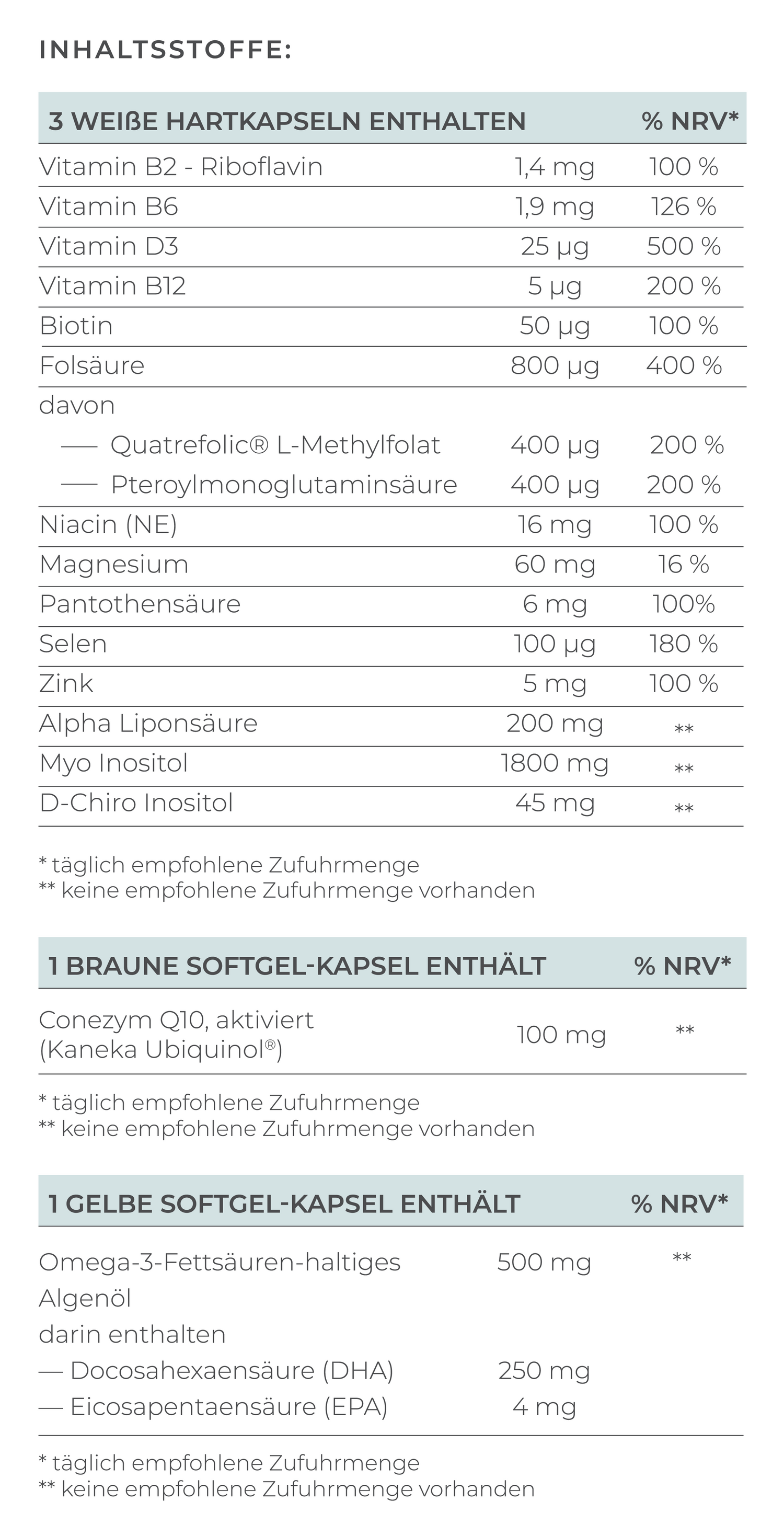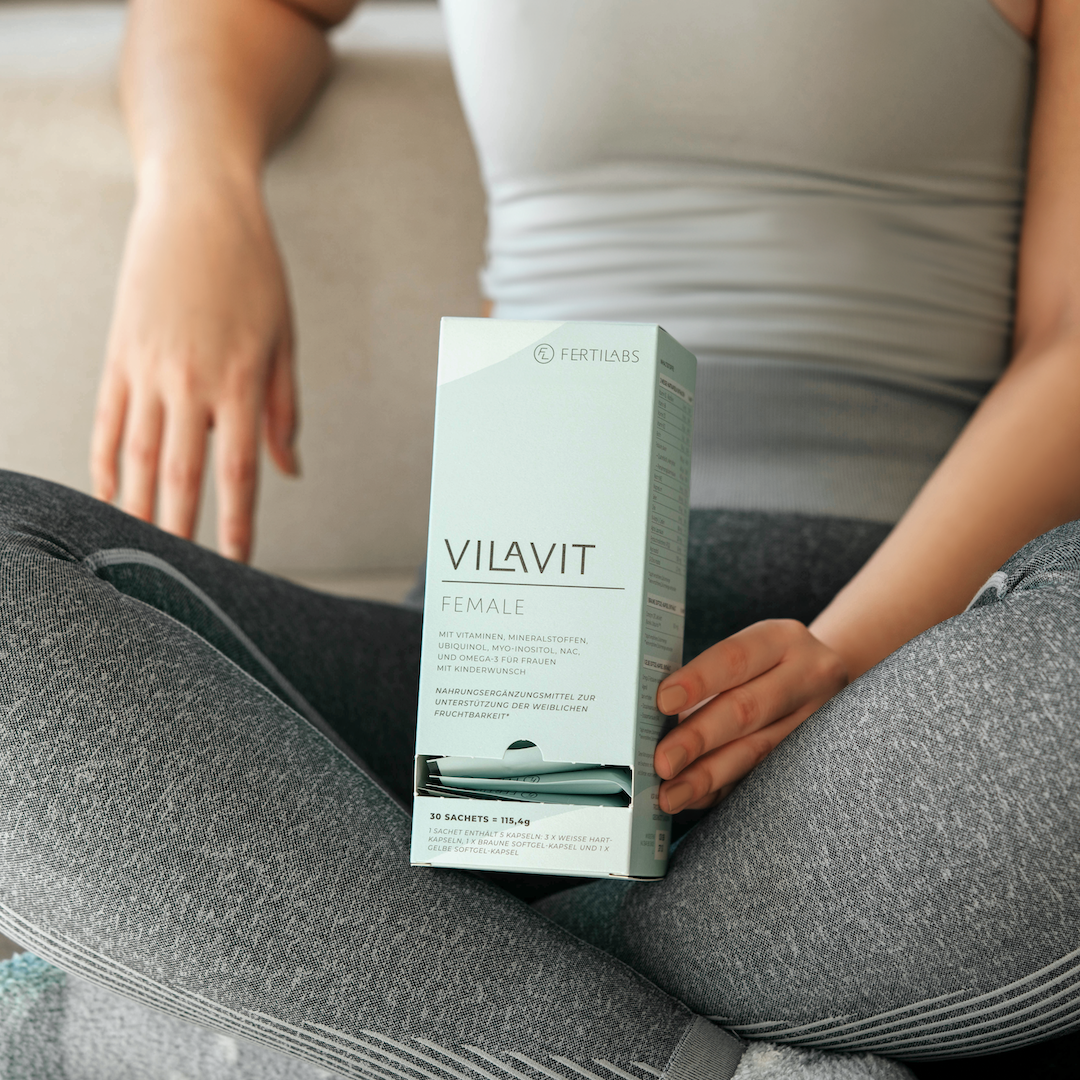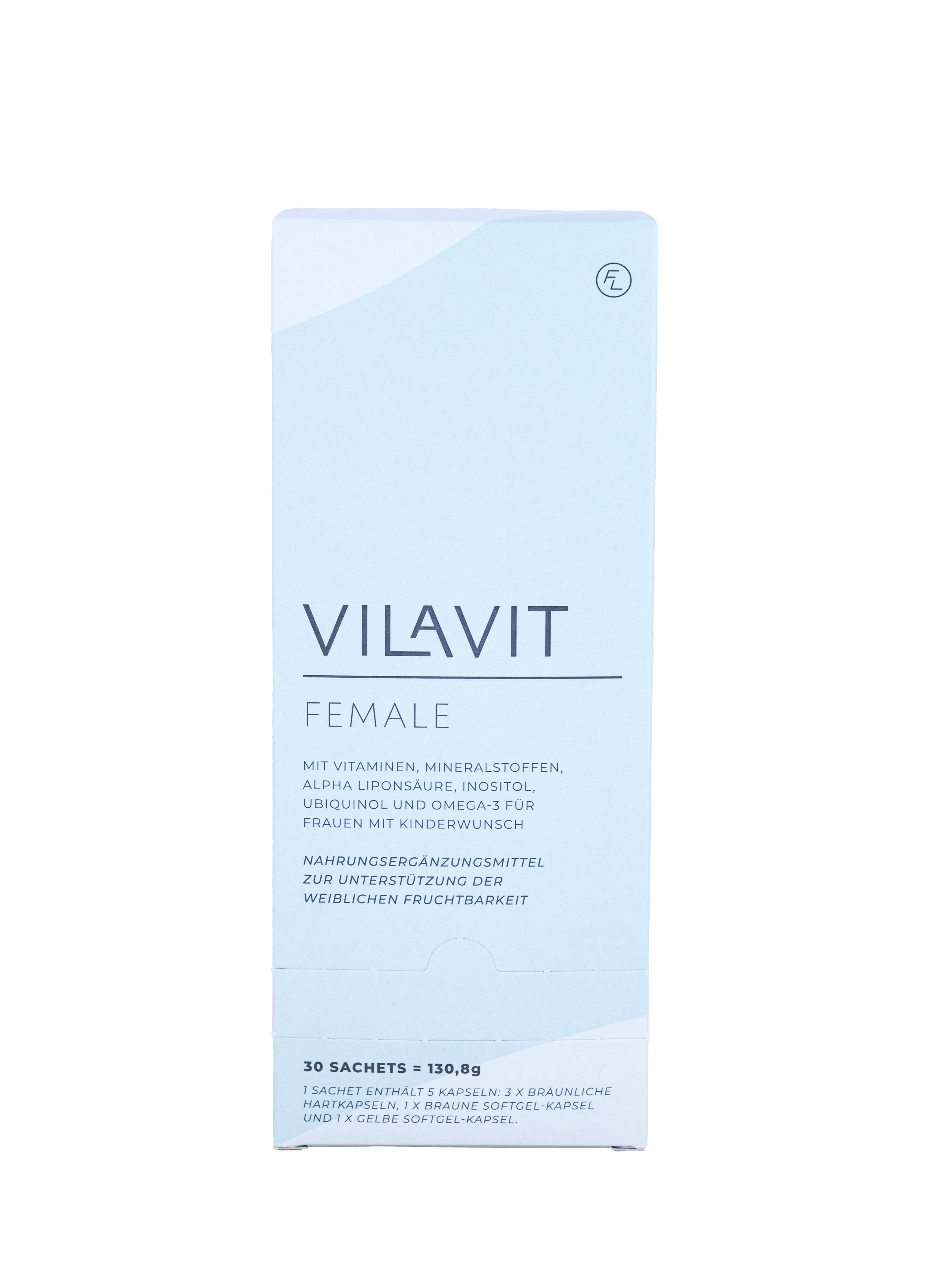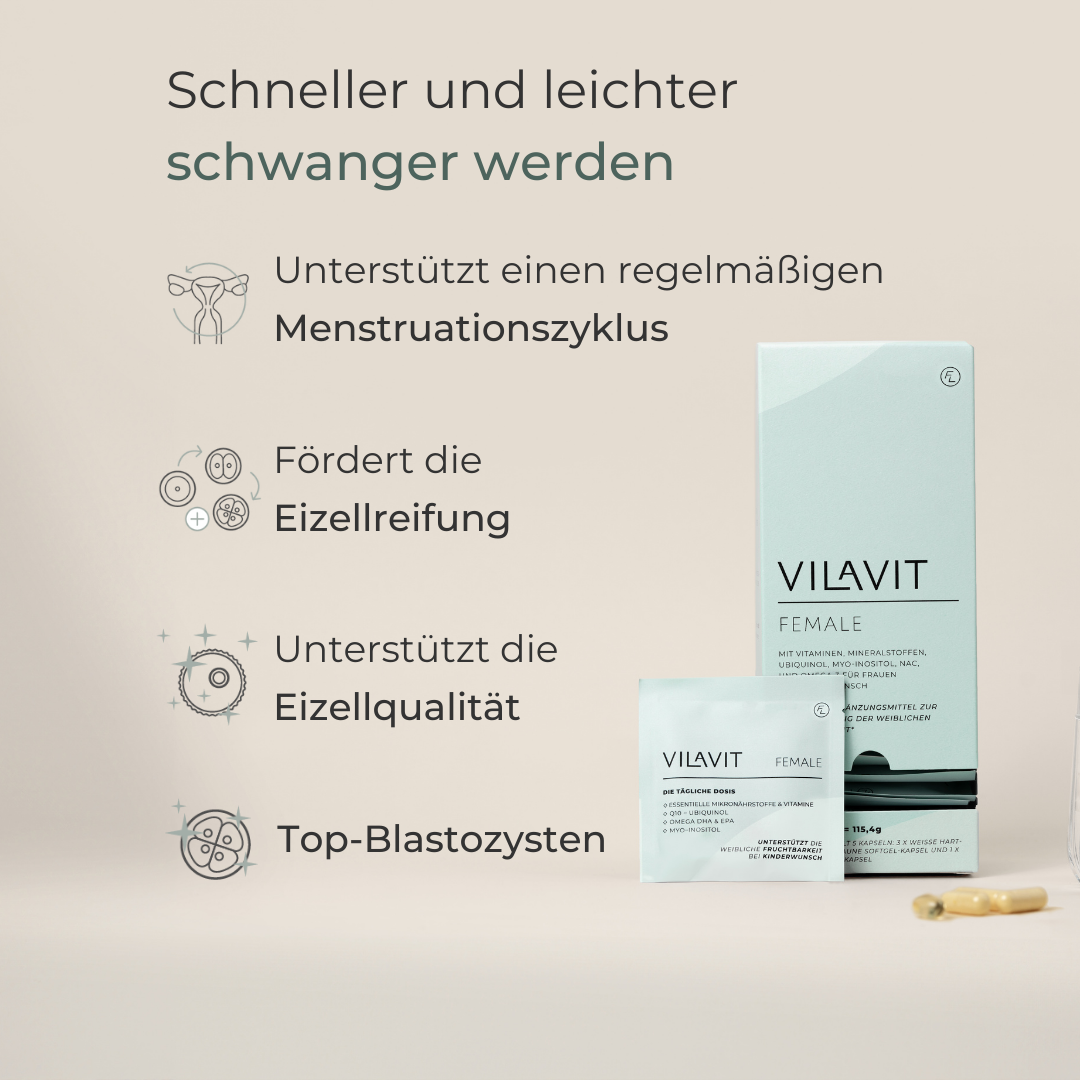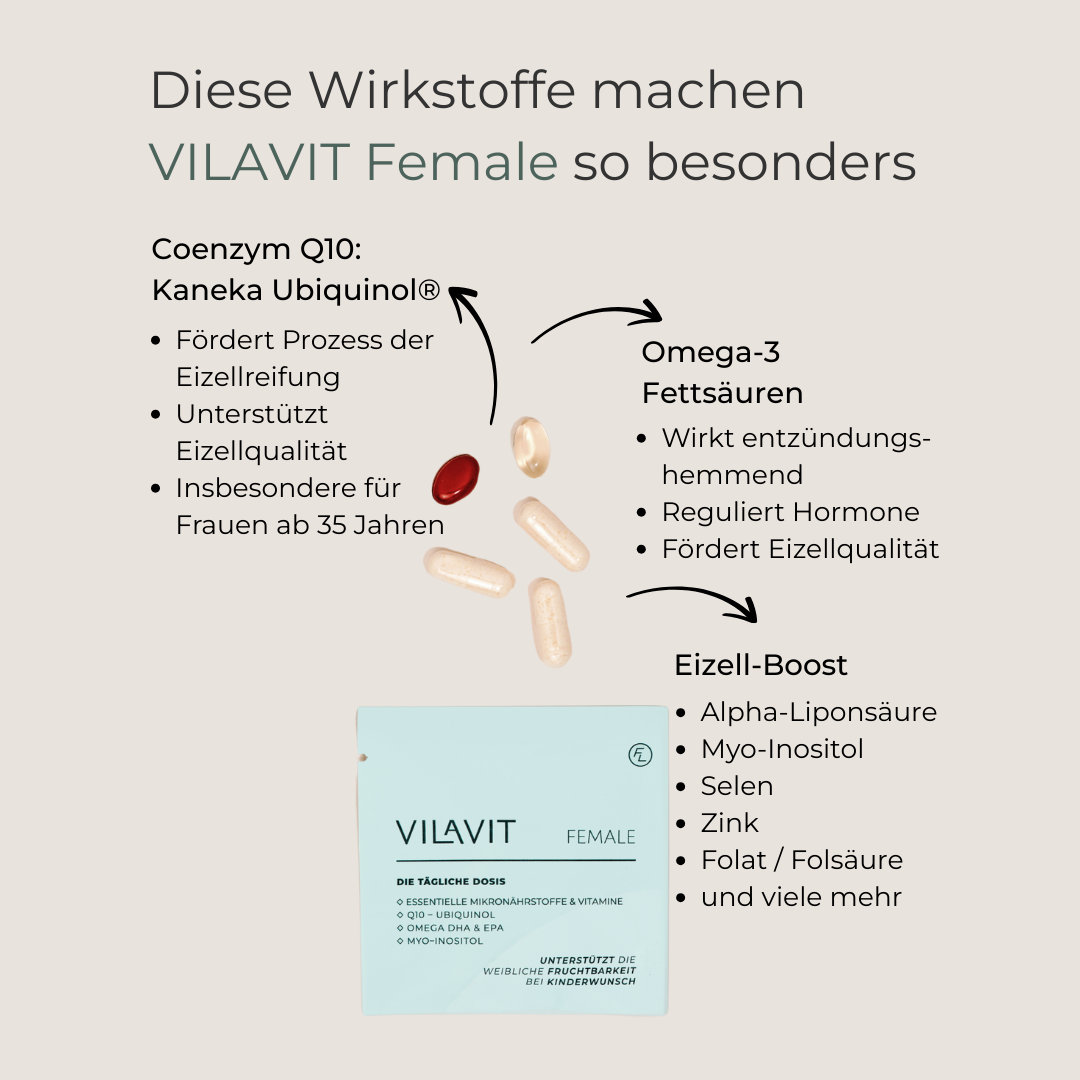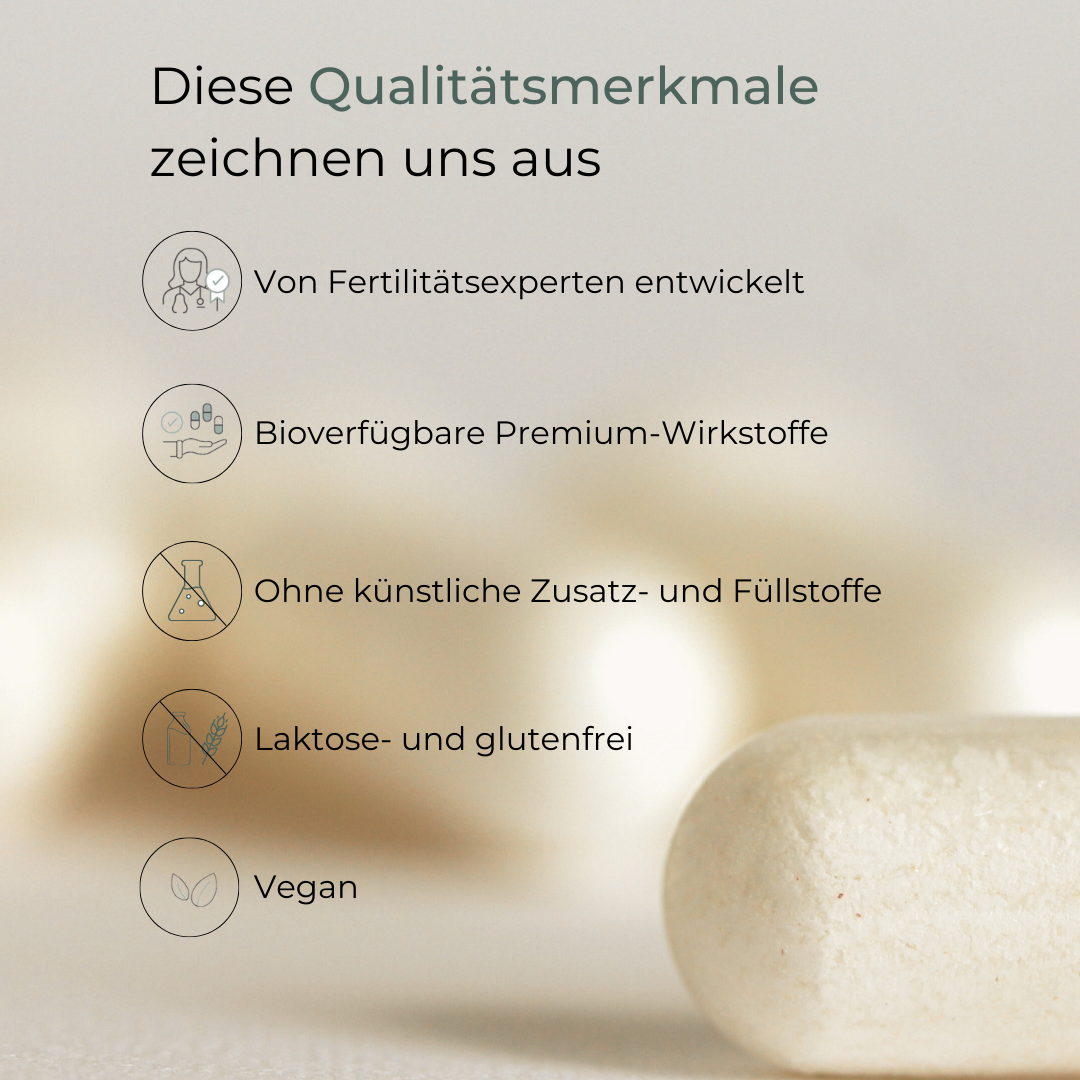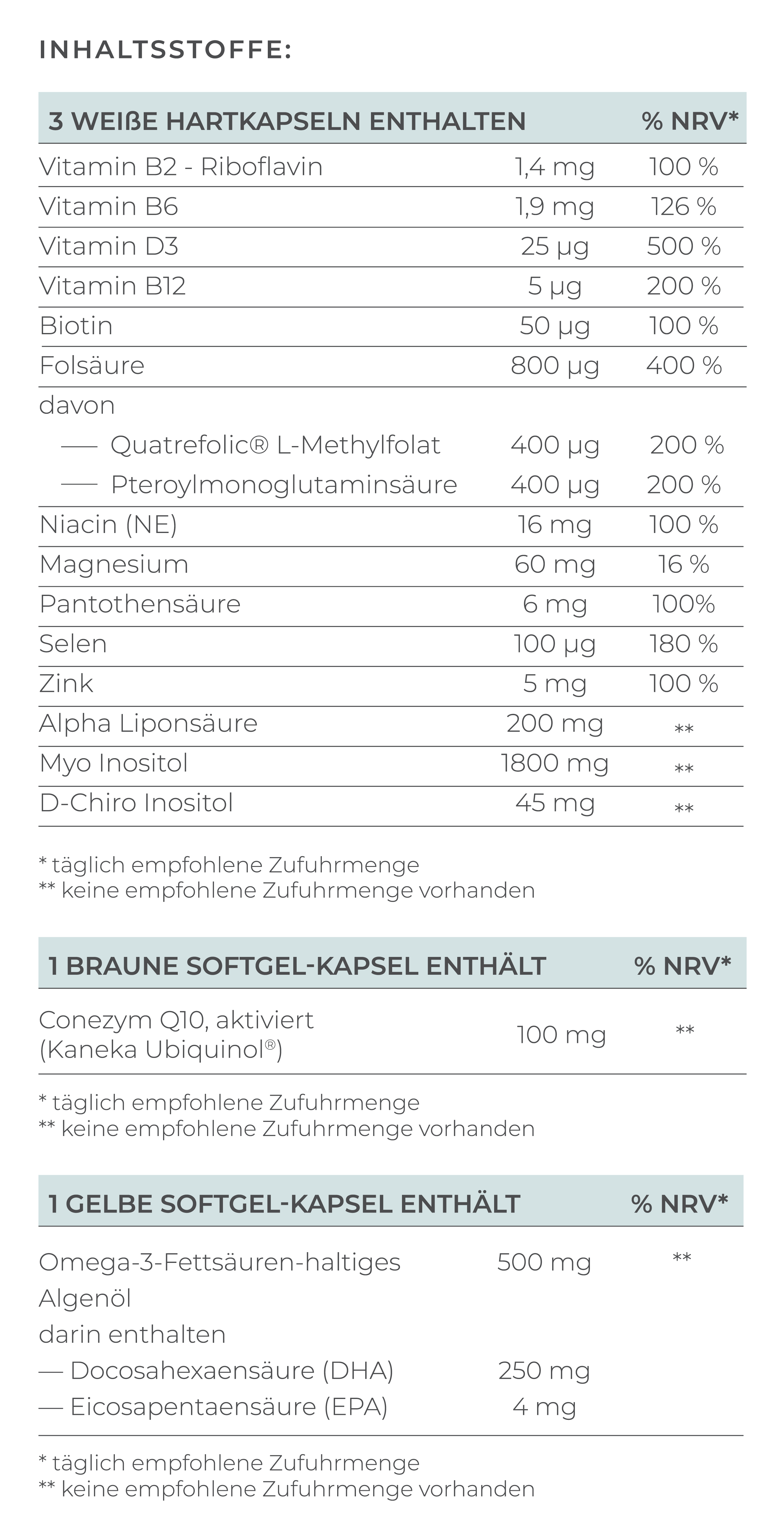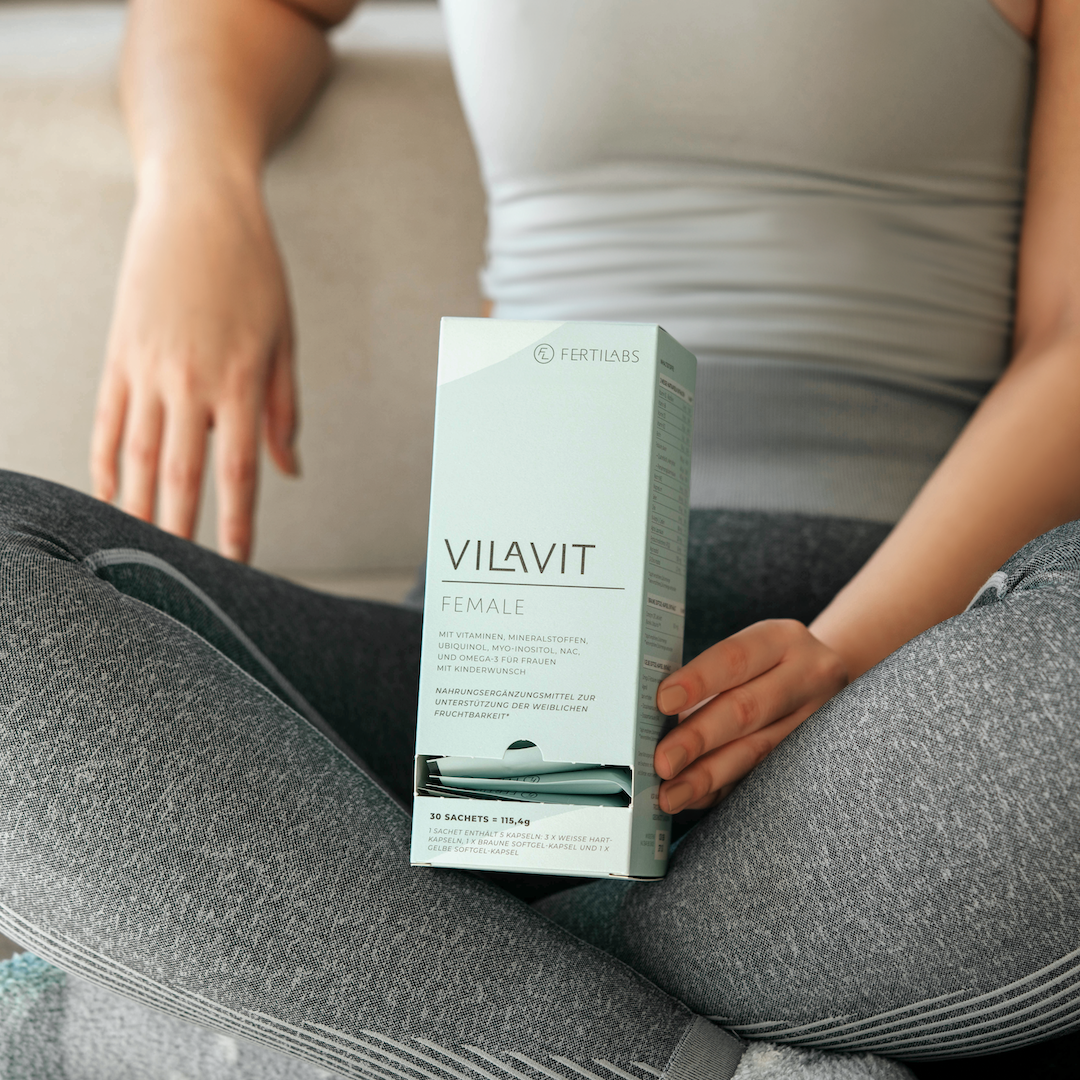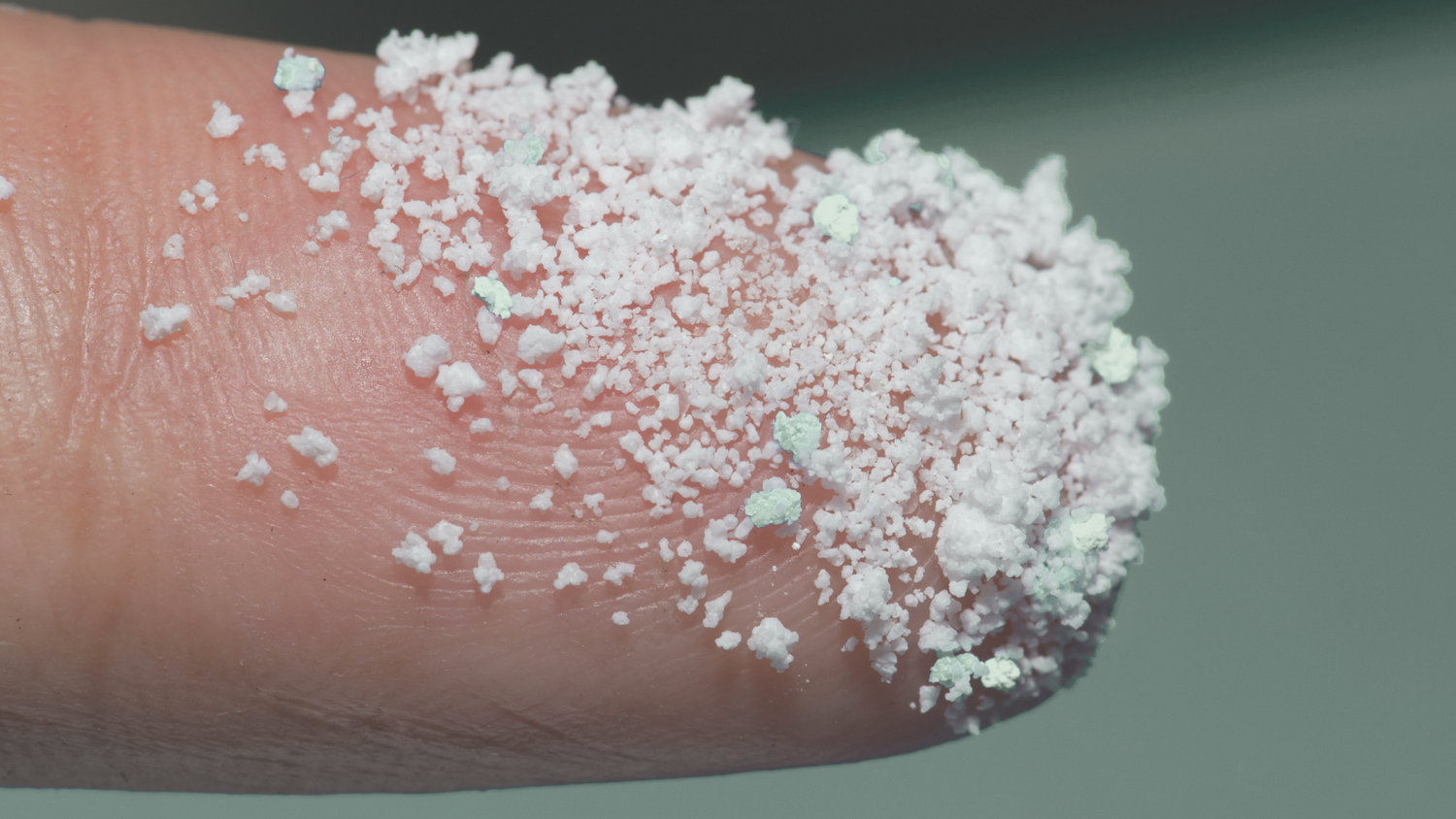The Most Important Information About AMH Levels for Fertility
-
The AMH level reflects the number of remaining egg follicles (follicles) in the ovaries.
-
The higher the AMH level, the greater the ovarian reserve tends to be.
-
AMH concentration can be measured independently of the menstrual cycle through a simple blood test.
-
The AMH level decreases with age, especially from around 36 years of age.
-
The intake of certain micronutrients can support egg quality.
A low AMH level can be a reason for unfulfilled fertility desires
In today's world, many women ask themselves, "Can I still get pregnant?" This question is particularly relevant for women who decide to have a child later in life.
One of the most important markers that play a role in this is the Anti-Müllerian Hormone (AMH) level. This value, determined by measuring the AM-hormone, serves as an indicator of a woman's egg reserve and can provide important information on whether a pregnancy is possible naturally or if assisted reproductive techniques, such as in-vitro fertilization (IVF), should be considered. Therefore, this value is often monitored in fertility centers.
What is the AMH Level and why is it important?
The Anti-Müllerian Hormone (AMH) is produced by the ovaries from puberty until menopause. It serves as a marker for the egg reserve and indicates how many eggs are still present in the ovaries.
AMH is produced by the granulosa cells within the follicles that surround the eggs. These follicles mature during the menstrual cycle and play a central role in fertility.
How is the AMH Level measured?
The AMH test is done through a simple blood test that can be taken at any point in the menstrual cycle. Hormonal contraceptives do not affect the result.
The detection limit of the test is usually 0.1 ng/ml. Levels below this threshold indicate that there are very few functional eggs left.
What Do High or Low AMH Levels Mean?
High AMH Level and PCOS:
An AMH level over 6 ng/ml can indicate polycystic ovary syndrome (PCOS). Women with PCOS often have a high egg reserve, but due to hormonal imbalances, the follicles may not mature fully. Therefore, a high number of eggs does not necessarily mean higher fertility.
Low AMH Level and Fertility:
A low AMH level indicates a low egg reserve, which can reduce the chances of pregnancy. However, a low AMH level does not automatically lead to infertility, but it may reduce the chances of natural conception.
Factors such as smoking also play a role: smokers tend to have lower AMH levels compared to non-smokers, as nicotine can negatively affect egg reserve.
What is a Normal AMH Level?
Normal AMH values vary depending on age and laboratory standards. In general, a value of 1–3 nanograms per milliliter of blood is considered normal.
The Ovarian Reserve of a Woman
A woman's ovarian reserve, i.e., the number of remaining eggs in the ovaries, is established before birth.
From puberty onwards, up to 1,000 follicles mature in the ovaries every month. However, only the largest and most developed follicle will release a mature egg during ovulation. The other follicles are absorbed. This cycle repeats itself in women approximately 300 to 500 times throughout their lives.
The process starts with follicle-stimulating hormone (FSH), which is released by the pituitary gland. FSH stimulates the growth of multiple follicles in the ovaries.
As the follicles grow, they produce estrogen (estradiol). The follicle that produces estrogen the fastest becomes dominant. The dominant follicle produces so much estrogen that it triggers a feedback loop and reduces FSH production. This inhibits the growth of other, less developed follicles.
When the estrogen production from the dominant follicle exceeds a certain threshold, it triggers a rise in luteinizing hormone (LH), which leads to ovulation.
The AMH Level and Age
As a woman ages, her ovarian reserve decreases, and consequently, her AMH level and fertility also decrease. The most significant decline occurs around the age of 36, although some women may experience a low reserve earlier.
Menopause begins when only very few fertilizable eggs are left, and menstruation stops.
Menopause typically occurs around the age of 50 but can sometimes start as late as the age of 60. If menopause begins before the age of 40, it is referred to as premature menopause.
Causes of a Low AMH Level
A low AMH level can have various causes. Possible reasons include:- Age of the woman: The most common cause of a low AMH level is increasing age, as the ovarian reserve decreases with age.
- Premature menopause: Some women experience early menopause, where the ovarian reserve depletes earlier than usual.
- Genetic factors: Hereditary conditions or genetic predispositions, such as Turner syndrome, can affect the ovarian reserve.
- Autoimmune diseases: Conditions where the immune system mistakenly attacks the body's tissue, such as autoimmune ovarian syndrome, can damage the ovaries and lead to a lower AMH level.
- Ovarian insufficiency: Reduced ovarian function, which can occur for various reasons, such as certain medical treatments or diseases.
- Cancer treatments: Chemotherapy or radiation therapy for cancer can impair ovarian reserve and lower the AMH level.
- Ovarian surgery: Surgical interventions on the ovaries, such as the removal of cysts or tumors, can impact ovarian reserve. Studies have shown that women with endometriosis who underwent previous surgery for an endometrioma had a three-fold increased risk of an AMH level below 1 ng/ml (Streuli, 2012).
- Polycystic Ovary Syndrome (PCOS): Women with PCOS often experience menstrual irregularities caused by hormonal imbalances. Some women with PCOS may have an AMH level higher than normal.
- Body Mass Index (BMI): There is an inverse association between AMH levels and BMI; higher BMI values are typically associated with lower AMH levels.
- Smoking: Current smokers tend to have AMH levels 44% lower than non-smokers (Plante, 2010).
- Birth control pill: Users of the birth control pill tend to have AMH average values 42% lower. However, after stopping contraception, the AMH level increases by 53% within three months (Werner, 2024).
- Endocrine disruptors: Endocrine disruptors such as phthalates and BPA can negatively affect egg reserve (Land, 2022).
Importance of the AMH Level in Reproductive Medicine
The AMH level plays a significant role in fertility treatment, particularly in determining the appropriate dosage for hormonal stimulation.
Studies have identified a correlation between AMH levels and ovarian response to hormonal stimulation. Patients with high AMH levels may be at higher risk for ovarian hyperstimulation, while patients with low AMH levels are likely to show a weak response (Ishii, 2019).
Ways to Enhance Fertility
For women with a low ovarian reserve, several steps can be taken to improve their chances of pregnancy:
Healthy Lifestyle
healthy diet, regular exercise, and avoiding harmful habits like smoking and excessive alcohol consumption, adequate vitamin D and iron levels are crucial for general health and fertility.
Micronutrients
High-quality micronutrients such as coenzyme Q10 (in the form of ubiquinol), DHA (docosahexaenoic acid) from omega-3 fatty acids, and antioxidants like alpha-lipoic acid, NAC (N-acetyl-cysteine), and selenium have shown positive effects on egg or embryo quality in clinical studies.
All necessary active ingredients for improving egg quality can be found in VILAVIT Female.
In-Vitro Fertilization (IVF)
Women with a low AMH level can increase their chances of pregnancy through assisted reproductive technologies like in-vitro fertilization (IVF). During IVF, eggs are retrieved from the body, fertilized outside the body, and then implanted into the uterus.
If the AMH level is very low (e.g., 1.0 ng/ml), higher doses of hormones may be required for stimulation.
In addition to measuring the AMH level, a sperm analysis of the partner is often performed to check male fertility.
If sperm quality is compromised, intracytoplasmic sperm injection (ICSI) may be an alternative to traditional IVF.
Egg Donation as an Option
In some cases, egg donation may be an option, especially if the woman’s own egg reserve is very low. In egg donation, eggs from another woman are used to facilitate pregnancy.
Conclusion: AMH is an Important Indicator of Fertility
The AMH level is an important indicator of a woman’s egg reserve and can provide valuable information in reproductive medicine about whether pregnancy is possible naturally or if assisted reproduction should be considered. For women with a low AMH level, a visit to a fertility clinic is a crucial next step in identifying suitable treatment options. Despite a low AMH level, there are ways to fulfill the dream of having a family.
FAQ
Can AMH Levels Improve?
The AMH level is generally considered stable and is mainly influenced by genetic factors and age. Unfortunately, there are no specific methods to improve AMH levels. However, certain lifestyle changes and the intake of micronutrients can help improve overall fertility and egg quality.
Can AMH Levels Fluctuate Between Tests?
Although the AMH level is one of the most reliable parameters, it can fluctuate from one test to another. Significant increases are rare and usually not indicative of an actual increase in ovarian reserve. Factors such as measurement variability, the timing of the menstrual cycle, and factors like smoking and illnesses can cause temporary fluctuations in AMH levels.
Can AMH levels increase from one test to the next?
While the AMH level is considered one of the most reliable parameters, it can vary from one test to the next. Significant increases are rare and typically not due to an actual increase in ovarian reserve.The following reasons can lead to fluctuations in AMH levels:
- Measurement variability: Laboratory methods and tests can show differences in results. Different laboratories or test methods may provide slightly varying values.
- Timing within the menstrual cycle: AMH levels can change throughout the menstrual cycle, although they are generally less variable than other hormonal markers.
- Factors such as smoking and illnesses: These can also influence AMH levels. Changes in these factors can cause temporary fluctuations in AMH levels.
- Seasonal fluctuations: Some studies have found seasonal differences in AMH levels, though these are usually minimal.
Can I Get Pregnant with a Low AMH Level?
Yes, it is possible to get pregnant with a low AMH level, but it may be more difficult. A low AMH level indicates a reduced ovarian reserve, meaning there are fewer eggs available in the ovaries. While this can impact fertility, it doesn’t necessarily mean pregnancy is impossible.
What Can I Do with a Low AMH Level?
A low AMH level indicates a reduced egg reserve but is not the only indicator of fertility. It’s advisable to consult a reproductive specialist for further fertility tests and discuss potential treatments such as hormonal stimulation or IVF. Maintaining a healthy lifestyle and planning your fertility early are also important factors. It’s crucial to view the AMH level in the context of other factors, as natural pregnancies are still possible with low levels.
Sources:
Streuli et al. In women with endometriosis anti-Müllerian hormone levels are decreased only in those with previous endometrioma surgery. Human Reproduction, 2012.




